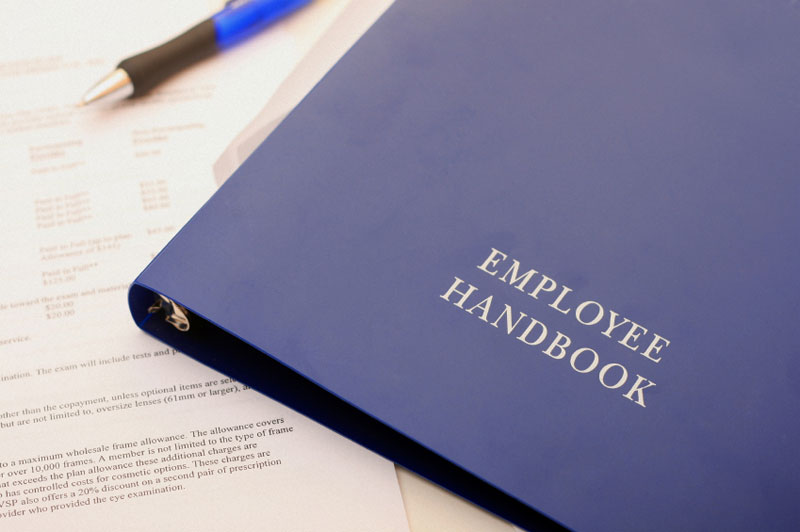Payroll
How to Respond to Common Employee Requests
If an employee comes to you with a request for employment verification, access to his or her personnel file, a job accommodation, or someone else to pick up his or her paycheck, will you know how to respond? Here are some guidelines for handling these ...
Aug. 18, 2017

If an employee comes to you with a request for employment verification, access to his or her personnel file, a job accommodation, or someone else to pick up his or her paycheck, will you know how to respond? Here are some guidelines for handling these types of requests.
#1: Employment Verification:
Employees seeking a loan, credit card, lease, or government assistance (among other reasons), may ask you to provide employment verification. These requests typically involve confirming dates of employment, hours of work, pay rates, and related information. If you receive such a request:
- Obtain the employee’s written authorization. Have the employee submit a written request and authorization to release the information. If an outside entity contacts you directly for employment verification, make sure you verify the authenticity of the request with the employee and obtain a written authorization to disclose the requested information. Note: If the outside entity is a court or government agency and is ordering you to provide the information, you generally don’t need the employee’s authorization but it’s a best practice to let the employee know you received the order.
- Determine what information to provide. Decide what information you are willing to provide. While some employers refuse to provide any type of employment verification information unless required to do so (such as by a court, law, or regulation), most employers will provide at least some information. In many cases, the lender, landlord, or government agency will provide the employer with a form requesting specific employment verification information. Make sure the authorization form signed by the employee covers the information being sought and only provide the information the employee authorized you to release. If the outside entity doesn’t provide a form, consider using your company letterhead instead.
- Provide accurate information. Make sure the information is accurate by double-checking any employment dates, pay rates, and hours of work provided. Respond as promptly as possible and retain a copy of the employment verification in the employee’s personnel file. As a best practice, designate a trained point of contact to handle employment verification requests.
#2: Access to Personnel Records:
An employee may ask to review his or her own personnel file. There is no federal law that requires employers to grant employees access to their own personnel file; however, several states do have such laws. If you are not subject to a specific requirement, you can decide how you want to handle the situation, as long as you apply the practice consistently (if you permit one employee to view their records, you must allow access under the same conditions for all employees who request it). It’s a best practice to have a designated HR representative or manager present when the employee inspects their file. Absent a state requirement, you may also consider limiting how many times per year an employee can access their personnel file. Employers should also keep records of when employees request and access their files.
#3: Reasonable Accommodation:
Under certain laws, such as the Americans with Disabilities Act and Title VII of the Civil Rights Act, employers must provide reasonable accommodations to qualified applicants and employees with a disability, or sincerely held religious beliefs and practices, unless doing so would cause an undue hardship on the business. Some states have similar requirements that apply to smaller employers, and some states have laws that require accommodations in additional circumstances, such as when an employee has a pregnancy-related condition.
If an employee notifies you (orally or in writing) that he or she needs an adjustment or change at work for a reason related to a medical condition or would like an accommodation for religious reasons, promptly begin the “interactive process,” or dialogue, with the employee to identify what, if any, reasonable accommodation should be provided. For disability-related accommodations, the conversation should be limited to the nature of the issue generating the request, the individual’s functional limitations, and accommodations that may be effective in meeting the individual’s needs. While employees aren’t required to make these requests in writing (or even use the term “reasonable accommodation”), make sure you thoroughly document the request, any follow-up discussions, and the resulting accommodation, if any.
#4: Paycheck Pickup:
There may be occasions when an employee asks you to give his or her paycheck to another individual because the employee is not available on payday. Generally, it is not a best practice to give an employee’s paycheck to another person even if it is authorized by the employee. However, if you do decide to allow another individual to pick up an employee’s paycheck, obtain the employee’s written permission and have the person who picks up the paycheck confirm his or her identity and provide written confirmation that he or she received the employee’s pay. When possible, encourage employees to use direct deposit so that they can easily receive their pay when they’re away from the workplace.
If the employee is unable to retrieve his or her paycheck because he or she is no longer with your company, make sure you comply with final pay deadlines and requirements. After verifying the employee’s mailing address, you may be able to send their final pay via first class mail. Check your state law for specific requirements.
Conclusion:
To help your company handle these employee requests, establish specific procedures that adhere to all applicable laws and train supervisors accordingly.
—–
(This article first appeared on the Connect@ADP blog.)
